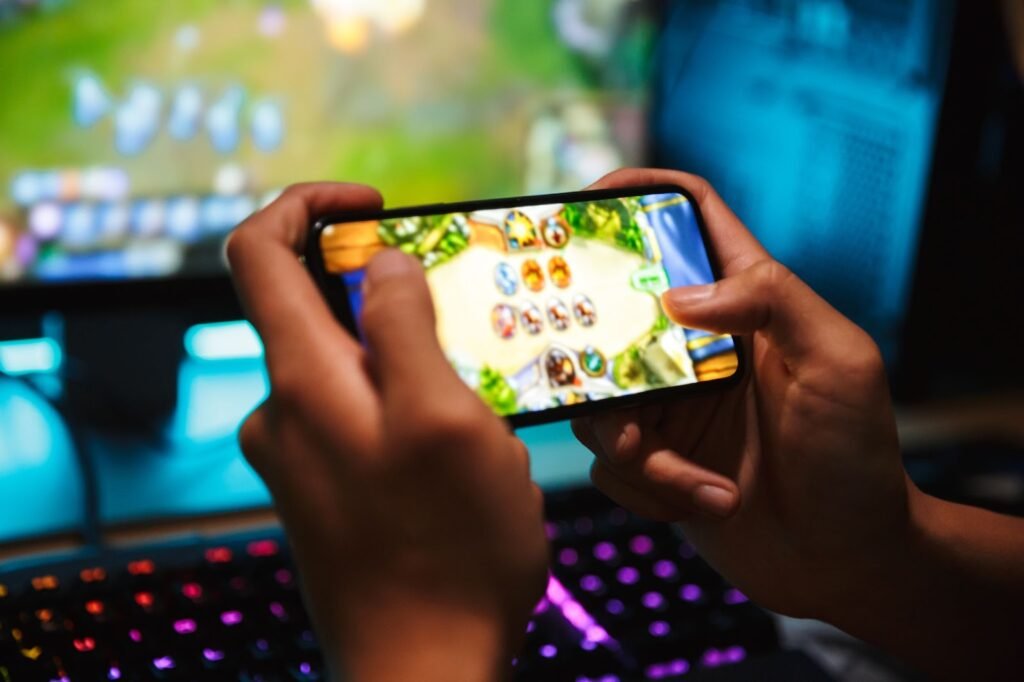India has a cultural history and a larger population base that traditionally loves sports especially cricket which is a unifying game in the nation that allows people to converge to share great moments. With the new technologies, there has been a rise in online gaming platforms that have heavily attracted many people. Looking deeper, it is clear that the use of technology spearheads a future that will massively influence the way sports and online gaming will look like in India. In this post, we look into the trends of sporting and gaming culture in India.
The Digital Revolution
Since smartphones and cheaper internet connectivity can be found almost anywhere nowadays, sports events and online gaming have become available to almost everyone. This trend has seen a growing digital community, that enjoys visiting some of the best sports betting sites in India to play their favorite games. Streaming services and social media platforms also thrive in helping people in India enjoy watching and commenting about cricket events further building a robust community. With the combination of cutting-edge technologies, such as artificial intelligence, deep learning, and the Internet of Things (IoT), the sports and gaming experience will transform user experiences.
AI-powered algorithms will personalize content recommendations, providing tailored sports highlights and gaming suggestions based on individual preferences and behavior patterns. This hyper-personalization will increase user engagement and foster a sense of belonging inside digital communities, fueling long-term growth in online sports and gaming ecosystems. As AI advances, its applications in player performance monitoring, game development, and content production will open up new avenues of innovation, improving the overall user experience and transforming the future landscape of sports and online gaming in India.
Esports Ascendancy
The area of e-sports, which at one point was regarded as a hobby, has grown to become a worldwide trend now and this statement is very much true for India as well. As a country in which the proportion of young people is rising at a fast rate and there is no doubt that they have a great interest in gaming, India is in the right position to become a major contributor to the esports market. With the popularity of professional leagues, and sponsorship, as well as, endorsement we will be able to shift esports athletes into the same status as top traditional sports stars.
In sports, online streaming of events such as esports will eliminate differences between physical sports events and e-sports tournaments, thereby developing hybrid events that will be enjoyed by the masses. Sports teams and esports organizations can jointly provide the stage for cross-disciplinary events and fresh marketing campaigns that could remove the barriers between old-style sports lovers and gaming fanatics. With the affirmation of esports on a global scale, and the growth of the Indian gaming community, the gaming community will be very relevant in shaping the future of competitiveness in e-sports, while inspiring innovation, and motivating the up-and-coming gamers!

Rise of Mobile Gaming
India’s games market is no doubt dominated by mobile. Besides the natural ease and portability of smartphones, mobile gaming has become a universal favorite among all generations. As mobile technology is advancing day by day, it is going to open the pathway of innovative gaming tricks and offer a vast range of genres made to Indian tastes. The growing popularity of mobile esports is certainly not a matter of chance but a very logical consequence of the popularity of mobile gaming in India. The competitive side of mobile gaming is not underrated, as some of the PUBG Mobile and Free Fire championships have surpassed the viewer count of many TV channels, thus proving that mobile gaming can be as competitive as professional esports tournaments. The Indian mobile esports scene will thrive if there is an extra investment in related infrastructure for example specially designed arenas and training centers. It is also possible India is going to be a global leader in mobile gaming competition.
Integration of Augmented Reality (AR) and Virtual Reality (VR)
The application of AR and VR technologies is the major way of altering both sports and game experiences. These can range from 3D AR overlays during cricket events to VR-based immersive gaming settings which will result in a neutralization even of the virtual and physical worlds for intensified involvement of the players.
Combining AR and VR will create a new spectrum of the processes of a fan to communicate and participate in sports events. The use of XR reveals that stat and analysis will be projected on the viewers viewing a cricket game in real-time, as well as consumers and gamers can be in virtual worlds where they will be able to compete against other players from different countries. Because of this interactivity, those experiences help not only the entertainment aspect of the sports and games, but also strengthen the relationships among fans, players, and the media. By now, AR and VR technologies are already available and less costly. Such widespread application will shift the way we see sports and games and a completely new era of entertaining experiences that involve our senses will be ushered into India for sure and the world over.
Gamification of Sports
Traditional sports leagues are embracing gamification to increase fan engagement. Fantasy sports systems have already acquired significant popularity, allowing fans to create virtual teams and compete against one another based on real-life player performance. This tendency will only grow, as creative gamification aspects are incorporated into sports broadcasts and fan interactions.
Gamification of sports expands beyond digital platforms and into physical stadiums. Stadiums and arenas are using interactive features like digital leaderboards, augmented reality games, and immersive fan zones to improve the in-person experience. For example, during halftime at a basketball game, fans may be able to shoot virtual free throws, with rewards granted to those who score the highest. These interactive aspects not only delight fans but also provide unforgettable experiences that keep them returning for more.
Also, social media platforms have taken a very significant turn with the gamification of sports where fans are now actively involved in challenges, surveys, and competitions dealing with their favorite teams and personalities. Through creative campaigns with hashtags, UGC competitions, and virtual fan groups, fans develop an even higher degree of engagement with sports events and, therefore, generate stronger relationships with their favorite teams. With technology becoming increasingly complex, gamification will involve more tactics that are more innovative.
Evolving Regulatory Landscape
The regulatory control of online gaming and sports betting is undergoing a transition. Between ten to twenty states already approved by the government allowing online sports betting, the industry now looks forward to a fast growth. Nevertheless, with the implementation of hard and fast rules and responsible gaming practices to aspire to protect consumers and safeguard integrity will be taken as long as the industry thrives.
Along with this, the introduction of regulatory bodies that are self-regulating, as well as the industry norms that are aimed at the creation of transparency and accountability, also changes the landscape of the regulation process. For instance, operators of some of the best sports betting sites in India are incorporating ethical play systems such as ID-checking mechanisms, self-exclusion options, and wagering limitation methods to minimize gambling addiction and impulsive behavior among their players. This can be done by the regulators ensuring they collaborate with industry stakeholders to figure out how to deal with such issues as match-fixing, fraud, and money laundering, hence the integrity of sports and gambling businesses is safeguarded.
Furthermore, the legalization of online sports betting has created new potential for income production and tax revenue for state governments. Governments can generate extra revenue streams by imposing taxes and licensing fees on gambling operators, which can then be used to fund public services, infrastructure development, and social welfare programs. However, establishing a balance between maximizing revenue and guaranteeing consumer safety remains a significant problem for policymakers, emphasizing the importance of continual communication and collaboration among government agencies, industry participants, and consumer advocacy organizations.
Emergence of Niche Sports
While cricket remains the most popular sport in India, there is an increasing demand for niche sports. From mixed martial arts to extreme sports, niche disciplines are gaining traction among Indian viewers. As platforms expand their content offerings, these alternative sports are likely to gain appeal. The rise of niche sports is fueled not only by shifting consumer preferences but also by the democratization of content creation and dissemination made possible by digital platforms.
Social media influencers, content creators, and grassroots organizations are using internet platforms to promote niche sports and highlight the skills of aspiring athletes. These platforms enable marginalized sports to get attention and sponsorship opportunities, hence promoting their growth and popular acceptability. Furthermore, technology improvements such as live streaming and on-demand video services allow fans to access niche sports content at any time and from any location, breaking down geographical borders and increasing the worldwide appeal of these disciplines. As a result, niche sports not only enrich India’s sporting scene but also help to diversify and globalize the sports business as a whole.
Community-driven Engagement
Both sports and gaming programs will place a strong emphasis on community interaction. Online communities and fan forums will act as gathering places for debate, cooperation, and content development. Brands and organizations that prioritize community-building initiatives will gain more resonance and loyalty from their target audience. The impact of community-driven engagement goes beyond simple interaction to active participation in defining the future of sports and gaming. Crowdsourcing efforts and user-generated content campaigns will allow fans and gamers to directly influence product development, event planning, and marketing methods.
Brands may promote a sense of ownership and belonging within their communities by allowing enthusiasts to offer ideas and feedback, resulting in stronger connections and driving innovation. Furthermore, community-driven engagement promotes tolerance and diversity by bringing people from various backgrounds together to share their enthusiasm for sports and games, thereby breaking down barriers and developing mutual understanding. As we traverse the changing landscape of sports and gaming in India, community-driven engagement will be critical in driving meaningful interactions, promoting cooperation, and creating flourishing ecosystems that live on shared experiences and collective innovation.
Innovative Monetization Models
Subscription in-grid models, in-game purchases, and tailored advertising are likely to become the new standards. On the other hand, NFTs which are digital items that are sold today provide another way for selling and buying. The use of blockchain brings a completely fresh perspective to the game of revenues and let innovators come up with new brand-new ways to earn. Blockchain-based smart contracts provide a platform for the development and transfer of digital assets such as virtual souvenirs, in-game items, or fan tokens which maintain the transparency and security of deals.
Cultural Localization
Despite the worldwide attraction of sports and games, cultural localization will be critical to increasing involvement in India. Content makers, game developers, and sports leagues will need to adjust their services to meet the numerous cultural nuances and regional preferences that exist across the country. Furthermore, cultural localization involves more than just translating information; it also includes a deeper awareness and incorporation of local traditions, customs, and narrative approaches. Sports leagues, for example, may include elements from traditional Indian festivals and folklore in their branding and commercial efforts to create a sense of familiarity and emotional connection with Indian consumers.
Similarly, game creators can incorporate references to Indian mythology, locations, and cultural icons into their titles, creating a one-of-a-kind immersive experience that represents players’ heritage and identity. By embracing cultural localization, sports and gaming companies can strengthen links with Indian consumers, improve brand authenticity, and reach into new market groups, resulting in long-term growth and success in the dynamic Indian market.
Conclusion
The sports industry and online gaming domain of India with its unbounded creative prospects and possibilities has a limitless future. As technology progresses and societal values shift, we are going to see the beginning of a new phase in which the virtual and physical worlds will become more and more entangled. India can utilize the trending sports and gaming around the world by adopting global community participation which will lead to the country being the global power in sports and gaming through community involvement and inclusion. Through uniting people from different social and cultural standpoints into an inseparable community, sports, and gaming may turn out to be one of the most impactful means of overcoming the discord and conflict of our times. Either in a real play or in a virtual reality environment, the rush of rivalry, as well as the happiness from physical activity, can achieve much deeper interactions and connect us all through our emotions. In Paxplay.in they have listed all best online casino and sports betting sites.
(India CSR)























